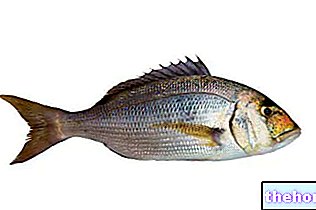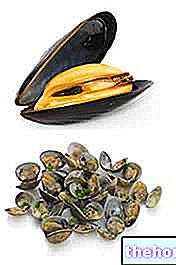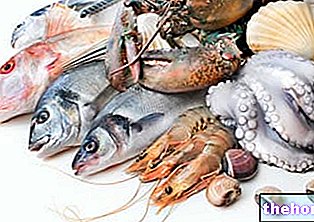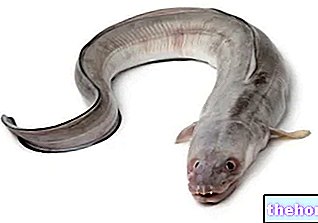The tombarello is widespread along all the European coasts. It is found both in the North Central Atlantic Ocean and in the Mediterranean Sea; it is very common in all Italian seas - including the Adriatic.
The tombarello, both in the larval stage and in adulthood, has a pelagic attitude and colonizes, in a variable manner according to the season and the place, the coast as much as the open sea.
Compared to tuna (red, bigeye, yellow fins, white, etc.), alletterato and bonito, the tombarello remains small: 50 cm in length for about 1.5-3.0 kg. It has the color of mackerel and the shape of a miniature tuna fish (with which it must not be confused).
significant (from 100 to 150 kcal / 100 g). It is more energetic than anchovies but less than mackerel. It can be compared to sardines, tuna alletterato, bonito and young bluefin tuna - even if with respect to the latter we must refer to the average between fillet and ventresca cuts.
The calories of the tombarello come, almost in equal measure, from lipids and proteins; carbohydrates, even if they were present, would be almost irrelevant. Fibers are absent. The fatty acids are largely unsaturated and the peptides have a high biological value. Among the lipids there is a very high quantity of semi-essential fatty acids of the omega 3 group; in particular eicosapentaenoic acid (EPA) and docosahexaenoic acid (DHA). The peptides are of high biological value, that is, they contain all the essential amino acids compared to the model of human proteins.
The tombarello should be rich in water-soluble vitamins of group B, such as niacin (vit PP), pyridoxine (vit B6) and cobalamin (vit B12). Regarding the fat-soluble vitamins, this fish contains excellent levels of vitamin D (calciferol). The mineral profile is also appreciable; the levels of potassium, phosphorus, iron and iodine are significant.
Cholesterol is not negligible. Lactose and gluten are absent, responsible for food intolerance in predisposed subjects. On the other hand, purines are abundant; histamine is absent in the fresh product but increases exponentially in the badly preserved tombarello.
Tombarello and pollution
Like other fish, the tombarello is also subject to pollution. Traces of mercury, lead, dioxins and the like may be present.
However, since it has a rather short life cycle and is located in the middle of the food chain, the level of contamination is all in all minor.
; this is not correct. Many confuse digestibility with the tendency to "recur" during digestive belching; this is given above all by the aromatic components of blue fish, which are no different from those of sardines, mackerel, herring, lanzardo, bonito, sardinella, etc. Excessive portions are however contraindicated in subjects suffering from digestive complications such as dyspepsia, gastritis, gastroesophageal reflux disease, gastric or duodenal ulcer, etc.
The tombarello is a food that lends itself to most diets. It is suitable for the low-calorie weight loss diet, as long as you keep in mind that it is not exactly a lean fish; in order to guarantee nutritional balance, it may therefore be reasonable to decrease the quantity of seasoning oil in the same meal.
The abundance of high biological value proteins makes the tombarello ideal in the nutritional regimen of malnourished subjects or those with an increased need for essential amino acids. Some suggest it in the case of very high intensity motor sports, especially in strength disciplines or with a hypertrophic component very important muscle.
EPA and DHA, semi-essential but biologically active omega 3, are very important for the constitution of cell membranes, for the growth of the fetus and children - nervous system, eyes, etc. - they counteract some metabolic pathologies - hypertriglyceridemia, arterial hypertension, etc. - they maintain cognitive functionality in old age, prevent some forms of neurosis - depressive symptoms - etc. However, the cholesterol content requires reasonable quantities and frequency of consumption.
Due to the absence of gluten and lactose, it is relevant in the diet for celiac disease and for milk sugar intolerance.
The abundance of purines makes the tombarello undesirable in the nutritional regimen for hyperuricemia and gout. As for the "intolerance to" histamine, however, it is allowed but only perfectly preserved.
The B vitamins have a mainly coenzyme function. The D, on the other hand, is crucial for bone metabolism and for the immune system. Note: remember that food sources of vitamin D are very rare. Iron can contribute to the achievement of the needs necessary to prevent or treat iron deficiency anemia - frequent in fertile and pregnant women. Phosphorus, hardly deficient in the diet, constitutes a large part of nerve cells and hydroxyapatite in the bones. Potassium, alkalizing and essential for neuromuscular conduction, is often lacking in athletes or in subjects who sweat a lot. Finally, iodine is necessary for the proper functioning of the thyroid gland - responsible for regulating cellular metabolism after secreting the hormones T3 and T4.
The cooked tombarello is allowed in the diet during pregnancy.
The average portion of tombarello - as a dish - is 100-150 kcal (about 100-230 kcal).
, as well as fabrics that are naturally rich in waterDue to the very nature of the fabrics that make up the tombarello, its conservation is rather limited. A high percentage of proteolytic enzymes is observed which tend to increase the amount of free amino acids. For this reason, badly preserved tombarello, even if not due to bacterial proliferation, tends to smell very quickly.
To increase the shelf life of the product, as an alternative to freezing, it is therefore essential to cook it rather than refrigerate it in the refrigerator when fresh / thawed. Furthermore, remember that omega 3 fatty acids are very sensitive to oxidation - by oxygen and free radicals - to light and heat, and tend to degrade quickly. Also for this reason, a badly preserved tombarello, as well as being very bad from the point of view. qualitatively, it is also less rich from a nutritional point of view.
Freezing the tombarello is also essential for those who intend to eat it raw. More precisely, the lowering of temperature - for the necessary time and intensity - annihilates the possible presence of Anisakis. In all cases, it is advisable to prefer gutted tombarelli (difficult to find) or lowered in temperature on board the boat. . The quality of these frozen fish is poor (especially if they need to be cooked), but the safety is very high.
, it would be a good idea, during the capture, to bleed it as is customary for tuna. This procedure, if well performed, speeds up the death of the animal which, in addition to improving from an organoleptic and gustatory point of view, suffers less. It is applied by making two deep cuts behind the pectoral fins, cutting off the largest blood vessels.
The tombarello can be eaten raw or cooked. Raw, such as carpaccio, tartare or sushi - after lowering the temperature. Cooked on the other hand, it is an excellent ingredient for fish soups and sauces for first courses, but also as a dish.
Some traditional Italian recipes are: Syracusan-style tombarello, seafood soup, grilled or grilled fillet of tombarello, pan-fried tombarello with pizzaiola, baked tombarello etc.
The most used spices in the combination with the tombarello are: thyme, marjoram, oregano, fennel - not the seeds - basil, chilli, white pepper. Ingredients such as lemon peel, green and black olives, capers, etc. are also widely used.
Note: the tombarello has a meat which, if cooked in excess, becomes easily stringy. It is therefore advisable to adopt progressive cooking techniques and not too intense or prolonged, or intense but very rapid and therefore incomplete.
as a predator. The scales are mainly located in the thoracic area and on the hips. - boghe, pagelli, etc.
Tombarello predators
Among the natural predators of the tombarello we remember the big fish and marine mammals, such as tuna, amberjack, shark (for example blue shark), dolphins etc. However, especially at a young age, it is persecuted by many other intermediate-sized species such as: tuna, bonito, leccia, bluefish, etc. Certain birds are also capable of catching it.
Reproduction and habits of the tombarello
The tombarello has a gregarious and pelagic attitude. It is significantly present throughout the Mediterranean Basin and in the North Central Atlantic Ocean.
It reproduces in the summer season, when it approaches the coast; after the hatching of the eggs, the larvae assume a pelagic attitude and initially become part of the zooplankton.




























